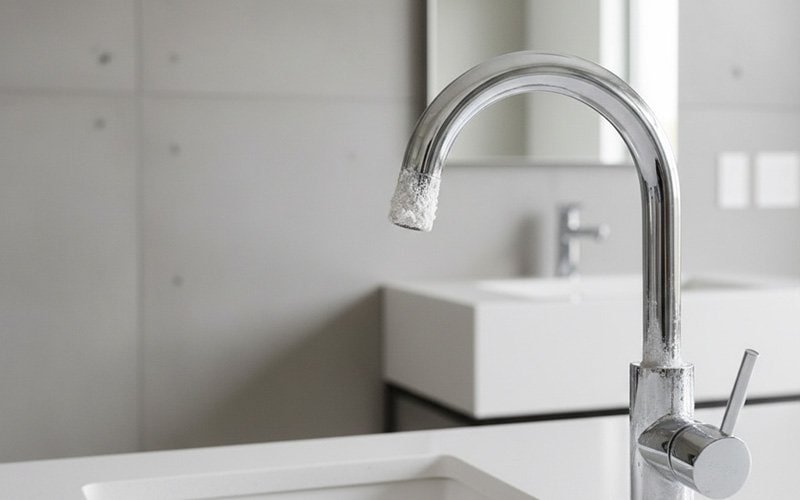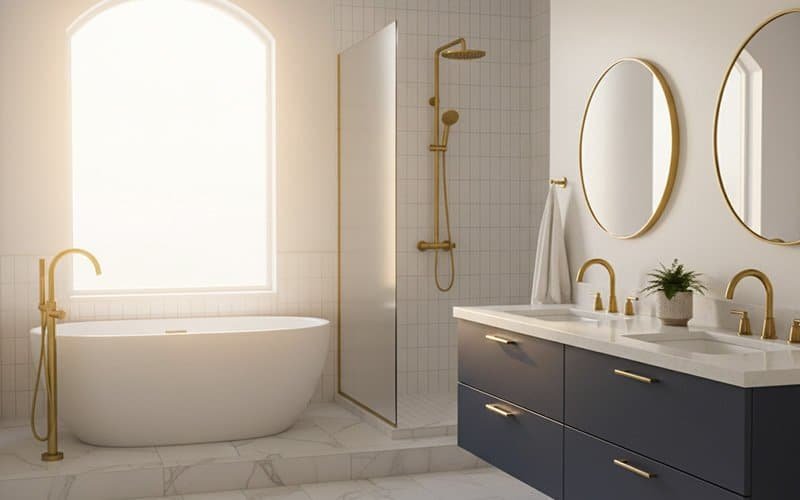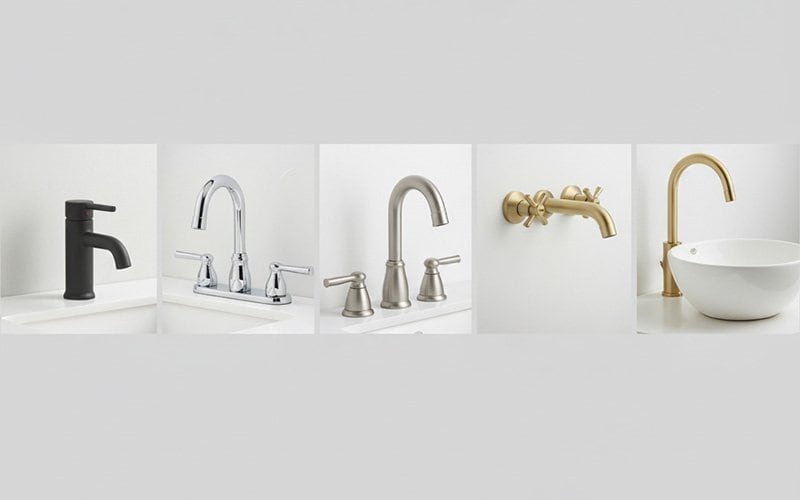Table of Content
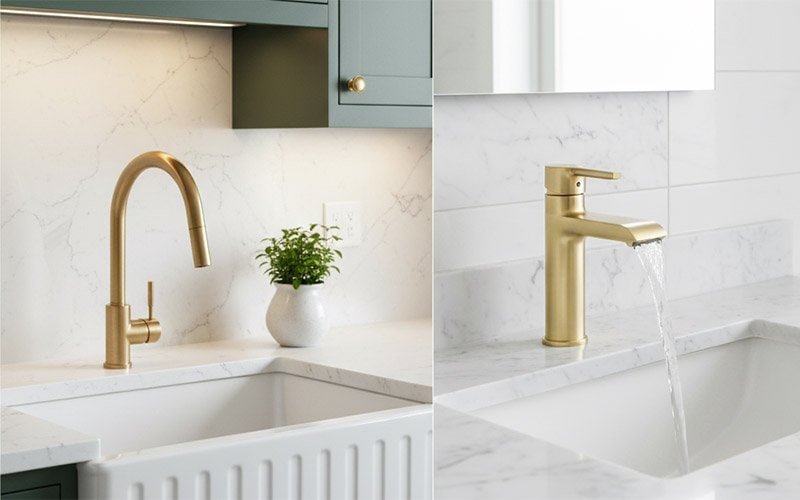
The Return of Warm Metals
Warm metal tones are back in kitchens and bathrooms. After years of cool chrome and nickel, you see more gold and brass finishes in home design. This shift brings up a common question when you’re choosing a new faucet: should you get brushed brass or brushed gold.
You’ll find a lot of confusing information out there. Some sources say brushed gold is warmer, while others claim it’s darker and more like copper. It’s hard to get a straight answer on durability and maintenance, too.
This guide cuts through the noise. You’ll learn the real difference between these two finishes, how they are made, and how to care for them. By the end, you will have the facts to choose the right faucet for your home.
What’s the Real Difference? Material vs. Coating
To pick the right faucet, you first need to understand a key difference. “Brushed brass” is usually the actual material of the faucet, while “brushed gold” is a high-tech coating applied over a base material, which is often brass itself.
This isn’t just a technical detail. It affects everything from how the faucet looks to how long it lasts.
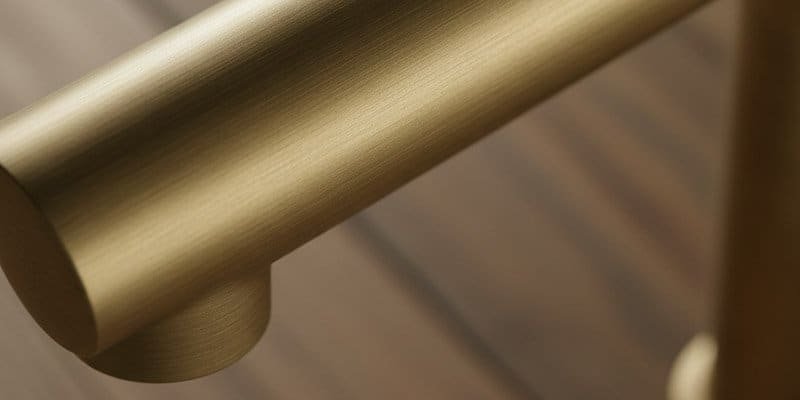
Brushed Brass: The “Living Finish”
A brushed brass faucet gets its look from treating the base material. The faucet body is solid brass, an alloy of copper and zinc. Manufacturers then brush the surface to create fine lines that give it a soft, textured look.
Because it’s a natural material, an unlacquered or lightly coated brass faucet will age over time. This aging process is called patination. The copper in the brass reacts with air and moisture, creating a unique, darkened surface.
Many people like this “living finish” because it adds character. It works well in traditional, farmhouse, or industrial-style homes where a perfect, unchanging look might feel out of place.
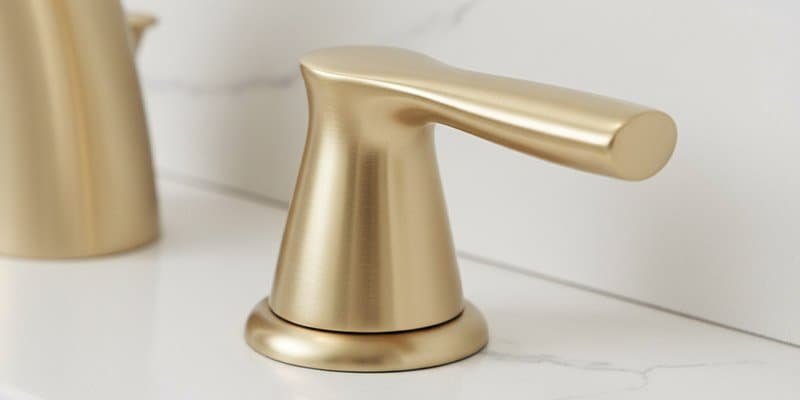
Brushed Gold: The PVD Coating
Most modern “brushed gold” faucets get their finish from a process called Physical Vapor Deposition (PVD). This isn’t paint or simple plating. It’s a high-tech process that bonds a thin layer of a strong metal, like titanium or zirconium, to the brass faucet body at a molecular level.
Here’s how it works:
- Preparation: The solid brass faucet is cleaned and polished.
- Vacuum Chamber: It goes into a vacuum chamber where all the air is removed.
- Vaporization: A target metal is vaporized into a plasma.
- Deposition: The vaporized metal atoms are deposited onto the faucet, creating an extremely hard and durable new surface.
The “brushed” look comes from texturing the brass before it gets the PVD coating. Because the color is created in a controlled process, “brushed gold” can come in many shades, from soft champagne to a deep, rich yellow. This finish is designed to resist change and keep its original look.
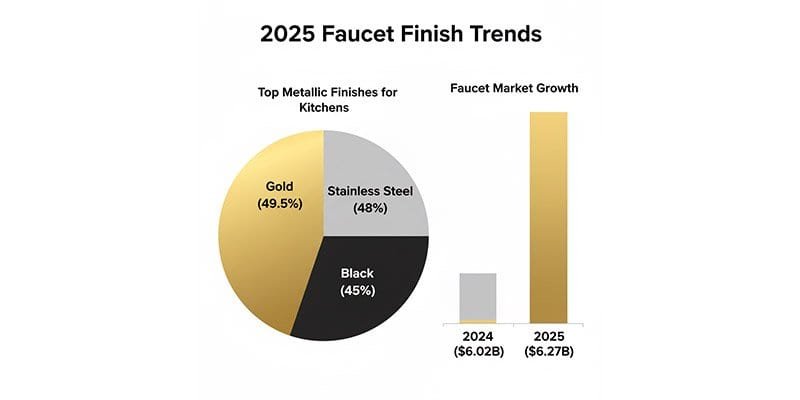
2025 Faucet Trends: What the Data Shows
Warm metals are not just a passing trend. According to the National Kitchen & Bath Association (NKBA), nearly half of designers (49.5%) see gold as the top metallic finish for kitchen faucets heading into the next few years, beating both stainless steel and black.
Market data supports this, with search volume for brushed gold faucets increasing over 11% in the first half of 2024.
The overall U.S. faucet market was valued at $6.02 billion in 2024 and is expected to grow to $6.27 billion in 2025. This growth is driven by home renovations and a demand for fixtures that are both stylish and functional.
While classic chrome still holds the largest market share at 43%, finishes like matte black and brushed gold are growing much faster.
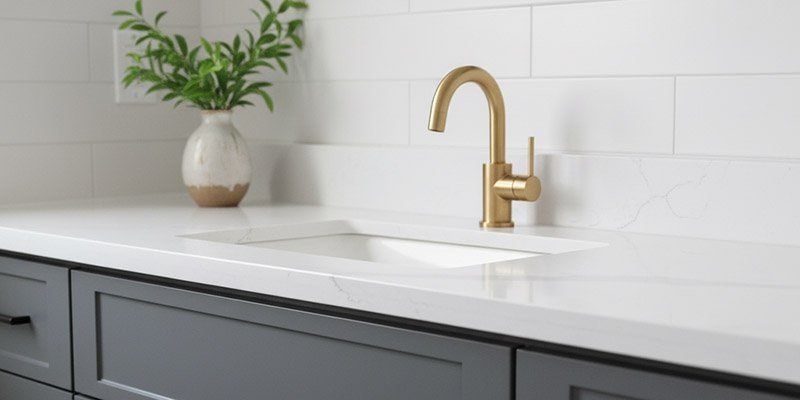
Appearance and Style: Choosing Your Look
Since there’s no industry standard for color, the look of a brushed brass or brushed gold faucet varies a lot between brands. What one company calls “brushed gold” might look completely different from another’s.
Color and Texture
Brushed Brass often has an earthy, muted yellow color with brown undertones. The brushing process creates visible lines, giving it a textured, organic feel.
Brushed Gold (PVD) offers a wider range of colors. You can find everything from light champagne to deep, saturated gold. The texture is typically smoother and more uniform than brushed brass.
Because looks vary so much, you should always get physical samples. See how the finish looks in your home with your lighting, countertops, and cabinets before you make a final decision.
Mixing Metals in Your Design
Mixing metals is a popular design strategy that adds depth to a room. If you want to try it, here are a few simple guidelines.
As interior designer Jeff McLinden of JM Construction notes, “Brass and gold are the perfect way to pull a different metal into the mix, especially if your home is full of nickel and black. The contrast is what lets each stand more confidently on their own—and looks amazing.”
- Pick a Dominant Metal: Choose one main finish for most of your fixtures, like your faucet and shower head.
- Add Contrasting Accents: Use a second or third metal for accents like cabinet hardware, mirrors, or lighting. Pair warm metals (gold, brass) with cool metals (chrome) or neutral ones (matte black) for a strong contrast.
- Repeat the Accent: Use your accent metal in at least two or three places. This makes the design look intentional and balanced.
For more ideas, check out design resources like (https://www.drivenbydecor.com/favorite-tips-mixing-metals-home/)
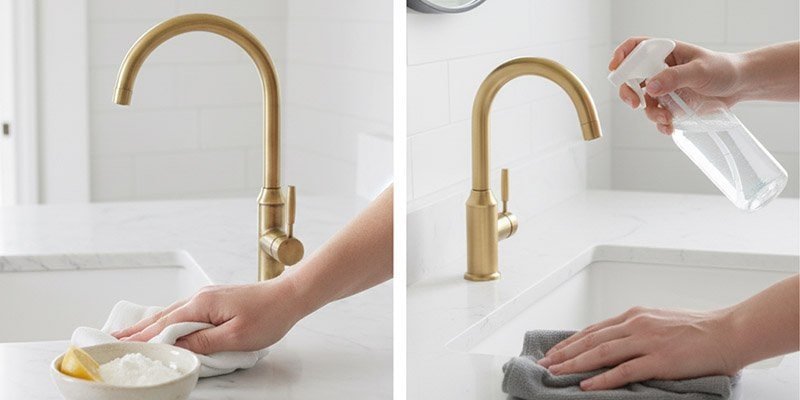
Durability and Maintenance: What to Expect
The way you care for your faucet depends entirely on its finish. Using the wrong cleaner can cause permanent damage.
Caring for Brushed Brass
With a brushed brass faucet, your goal is to either maintain its shine or encourage a natural patina.
- Daily Care: Wipe the faucet dry with a soft cloth after you use it. This prevents water spots.
- Routine Cleaning: Use a simple mix of mild dish soap and warm water with a microfiber cloth.
- To Restore Shine: If you want to remove tarnish, you can use a paste of lemon juice and baking soda or a commercial brass polish. Test it on a hidden spot first. These cleaners will remove any patina.
- To Encourage Patina: If you like the aged look, just stick to soap and water. Avoid any acidic cleaners or polishes and let the finish darken naturally.
Caring for PVD Brushed Gold
A PVD finish is very tough, but you can damage it with harsh chemicals.
- Daily Care: Just like with brass, wipe the faucet dry with a soft cloth after each use.
- Routine Cleaning: Use only mild, pH-neutral dish soap and warm water. Rinse well and blot dry.
- Removing Hard Water Spots: For tough mineral buildup, you can use a 50/50 mix of white vinegar and water. Wrap a cloth soaked in the solution around the spot for 15-20 minutes, then rinse thoroughly and dry. Don’t let vinegar sit on the finish for too long.
What to AVOID on PVD Finishes:
- Abrasive pads or steel wool.
- Cleaners with bleach, ammonia, or harsh acids.
- Abrasive cleaners or metal polishes.
Many manufacturers, like California Faucets, provide detailed care guides on their websites.
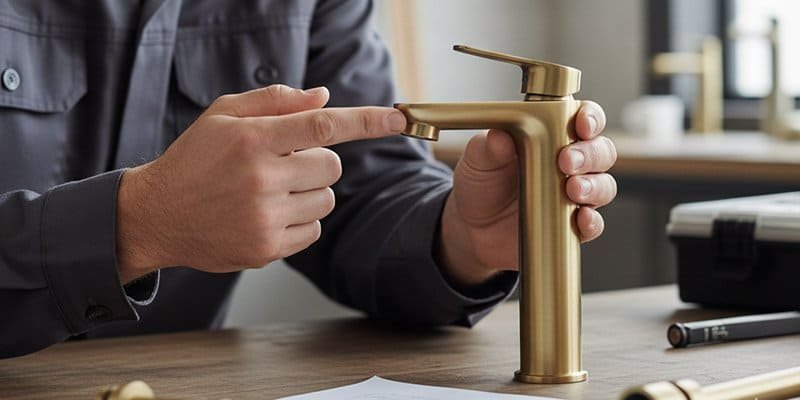
Expert Advice on Choosing Your Faucet
When it comes to durability, PVD finishes have a clear advantage. As one industry expert explains, “PVD faucets bring style and toughness to the table. My clients love how they hold up, especially in salty coastal air.”
The PVD process creates a surface that is highly resistant to scratches, corrosion, and tarnishing, making it a practical choice for busy kitchens and bathrooms.
For any faucet, look for a solid brass body. It’s more durable than zinc alloy alternatives and won’t rust.
Also, check for certifications. The NSF/ANSI 61 certification limits the amount of lead in the brass, and the EPA’s (https://www.epa.gov/watersense) label identifies faucets that use at least 20% less water without sacrificing performance.
Brushed Brass vs. Brushed Gold: At-a-Glance
This table summarizes the key differences to help you make a quick decision.
| Feature | Brushed Brass | PVD Brushed Gold |
|---|---|---|
| Core Nature | A finish on the base metal alloy. | A high-tech coating bonded to the base metal. |
| Aesthetic | Organic, muted, warm, with visible brush lines. | Satiny, luminous, crisp, with a uniform color. |
| Aging Process | “Living Finish” – Develops a unique patina over time. | “Lifetime Finish” – Engineered to resist change and tarnish. |
| Durability | Solid brass is durable, but the surface is softer and can scratch. | Exceptionally hard and highly resistant to scratches and corrosion. |
| Maintenance | Requires specific care to either manage or encourage patina. | Low maintenance; requires gentle, non-abrasive cleaning. |
| Best For… | Traditional, Farmhouse, or Industrial styles. | Modern, Contemporary, or Transitional styles. |
Frequently Asked Questions (FAQ)
Related Posts




